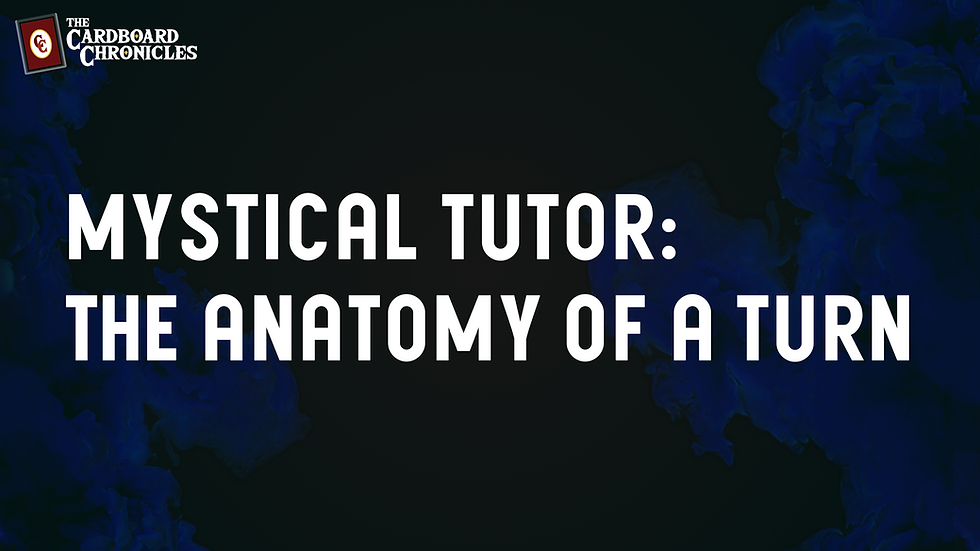Mystical Tutor: Turning Up the Heat with Planechase | Learn Magic the Gathering
- Greg Montique

- May 5
- 3 min read
Have you ever played Commander and thought, “This game is great, but what if a random plane made all squirrels unblockable and doubled mana costs while we’re stuck in a lava pit?” No?
Well too bad, because Planechase exists, and it’s glorious, absurd, and will absolutely derail your carefully laid plans. So let's learn Magic: The Gathering and dive into the world of Planechase!
What Is Planechase?
Planechase is a Magic: The Gathering variant that adds a whole new game element: Planes. No, not airplanes. Not Planeswalkers either. These are massive, environment-altering cards that represent locations in the Multiverse—places like Ravnica, Zendikar, or “some nightmarish dimension where everyone’s lands enter tapped and the only legal deck is mono-red burn.”

Each Plane has passive global effects, and they change the rules of the game while you’re there. And yes, they can and will break your deck in delightful ways.
The Basics (So You Don’t Cry Mid-Game)
Plane Cards: These oversized cards go in a planar deck (a separate deck just for planes). Each one represents a location in the Multiverse, with an ability that applies to all players.

Planar Die: A six-sided die with special symbols:
Chaos Symbol: Triggers a special, usually beneficial effect listed on the plane.
Planeswalker Symbol: You planeswalk. Discard the current plane and reveal a new one.
Blank Faces (×4): Nothing happens. Sad trombone.
How It Works: A Slightly Controlled Multiversal Disaster
At the start of the game, flip over one plane from the planar deck. That’s where everyone starts. Welcome to Murasa, please enjoy your free landfall triggers.
On your turn, you can roll the planar die any number of times. The first roll is free. After that, it costs 1 mana per roll. So if you really hate your current plane (looking at you, Pools of Becoming), you can pay to escape.
If you roll the planeswalker symbol, move to a new plane.
If you roll the chaos symbol, trigger the chaos ability printed on the current plane. That ability is often strong, often weird, and almost always the cause of someone shouting, “Oh come on!”
Why Play Planechase?
Because it’s fun, that’s why.
Also:
You get ridiculous synergy moments. Like drawing ten cards because you're on Tazeem, and it's mid-game.
It levels the playing field. That guy with the $1,200 pre-nerf Thassa’s Oracle combo deck? Guess what, bro, all creatures are now black and have deathtouch.
It adds unpredictability. That finely tuned control deck might fold if you end up in Eloren Wilds, where everyone gets extra mana.
Pro Tips (Because You’ll Need Them)
Build around interaction, not precision: Planechase makes your "tight" combos very loose.
Be ready for chaos: You might be winning, then hit Interplanar Tunnel and planeswalk five times in one turn. It happens.
Put the planar die somewhere obvious: It’s surprisingly easy to forget until someone goes, “Wait, did you even roll last turn?”
House Rule Warning: Some groups like using one communal planar deck; others give each player their own mini planar stack. Decide before someone flips Sanctum of Serra and wipes out the table's creatures.
Learn Magic: The Gathering & Embrace the Chaos
Planechase is what happens when Wizards of the Coast says, “Let’s just throw the lore, the mechanics, and the kitchen sink into a blender and see what comes out.” And somehow—it works. It's not for every night, but for those times when you want Magic to feel more like a board game or a dungeon crawler, Planechase delivers.
Just remember: when you’re stuck in Ancestral Arena, only 1 creature can attack and 1 can block, and you’ve been rolling the planar die for five turns straight, this is what you signed up for.
And it’s beautiful.










Comments